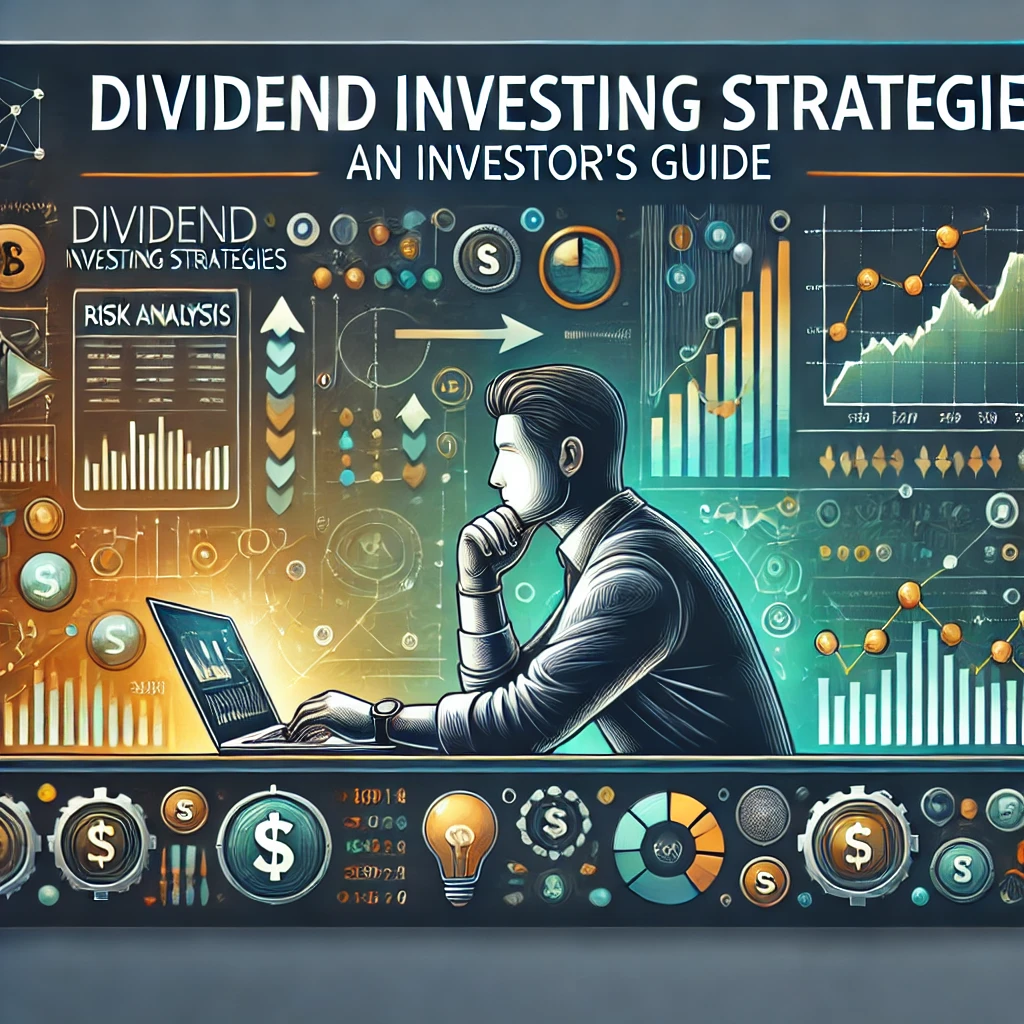
Forex Trading with Bollinger Bands
29/09/2024
Growth Vs. Value Investing: A Comprehensive Guide
06/10/2024Dividend Investing Strategies: An Investor’s Guide

Dividend Investing Strategies: An Investor's Guide
Dividend Investing Strategies: An Investor’s Guide
If you’re new to the investing game or looking for a way to earn while you grow your portfolio, dividend investing might be for you. This strategy involves buying shares of companies that distribute dividends –a portion of their profits – to shareholders. This investor’s guide will offer insight into various dividend investing strategies that can help maximize your earnings.
What is Dividend Investing?
Dividend investing refers to a strategy of buying shares in companies that regularly pay dividends to their shareholders. Typically, these companies are already established, profitable, and financially strong entities capable of generating reliable revenue flows.
Dividends can be a steady source of income for investors, especially during market downturns when capital gains might be difficult to achieve.

Types of Dividend Investing Strategies
When it comes to dividend investing, there are several strategies you can choose from, with each offering its advantages and nuances.
Dividend Growth Strategy
Dividend growth strategy is a popular approach that focuses on investing in companies that not only pay dividends but also have a track record of increasing their dividend payouts annually. The aim is to generate increasing income over time.
High Dividend Yield Strategy
This approach centers on investing in companies that offer high dividend yields. The dividend yield is calculated by dividing the annual dividend payment by the stock’s price. The high dividend yield strategy can provide an immediate return on investment.
Dividend Reinvestment Strategy (DRIPs)
Dividend Reinvestment Plans (DRIPs) are programs through which any dividends you receive are reinvested to buy more shares of the same stock. This strategy allows your investment to compound over time.
Benefits of Dividend Investing
Dividend investing offers several benefits:
- Steady Income: One of the most prominent benefits of dividend investing is that dividends provide a steady stream of income.
- Compounding: By reinvesting your dividends, you can take advantage of the power of compounding and increase your investment significantly over time.
- Less Volatility: Dividend-paying stocks are typically less risky compared to growth stocks.
How to Pick Dividend-Paying Stocks
When it comes to selecting dividend-paying stocks, here are a few aspects to consider:
- History of Dividends: Companies that have a history of paying dividends are more likely to continue doing so in the future.
- Dividend Yield: This is the percentage of a company’s stock price that it pays out as dividends. It’s a useful measure of the income you’ll earn from the stock.
- Payout Ratio: This ratio indicates the portion of earnings paid out as dividends.
- Financial Stability: Stable, well-established companies with strong financial health are often good dividend-paying stocks.
Conclusion
In short, dividend investing can be a great way to generate income and grow your portfolio. Remember to do proper research and consider your financial goals before deciding on the most suitable strategy for you.
Whether you prefer a high yield, dividend growth, or a DRIP strategy, historical dividends, payout ratio and the stability of the company should guide your selection process. As with all financial decisions, careful consideration, and due diligence are vital to a positive outcome.
Understanding various dividend investing strategies can help maximize your earnings and achieve your financial goals. Happy investing!
FAQ
Q: Can I lose money on dividend stocks?
A: Yes, as with any investment, there’s a risk you could lose money. If a company’s stock price falls significantly, it could wipe out any gains from dividends.
Q: Do all stocks pay dividends?
A: No. Generally, only established, profitable companies pay dividends. Younger, less-profitable companies often reinvest all their profits back into the business.
Q: How often do companies pay dividends?
A: Most U.S. companies pay dividends quarterly. Some companies may pay dividends semi-annually or annually.
Risk Management in Forex Trading


